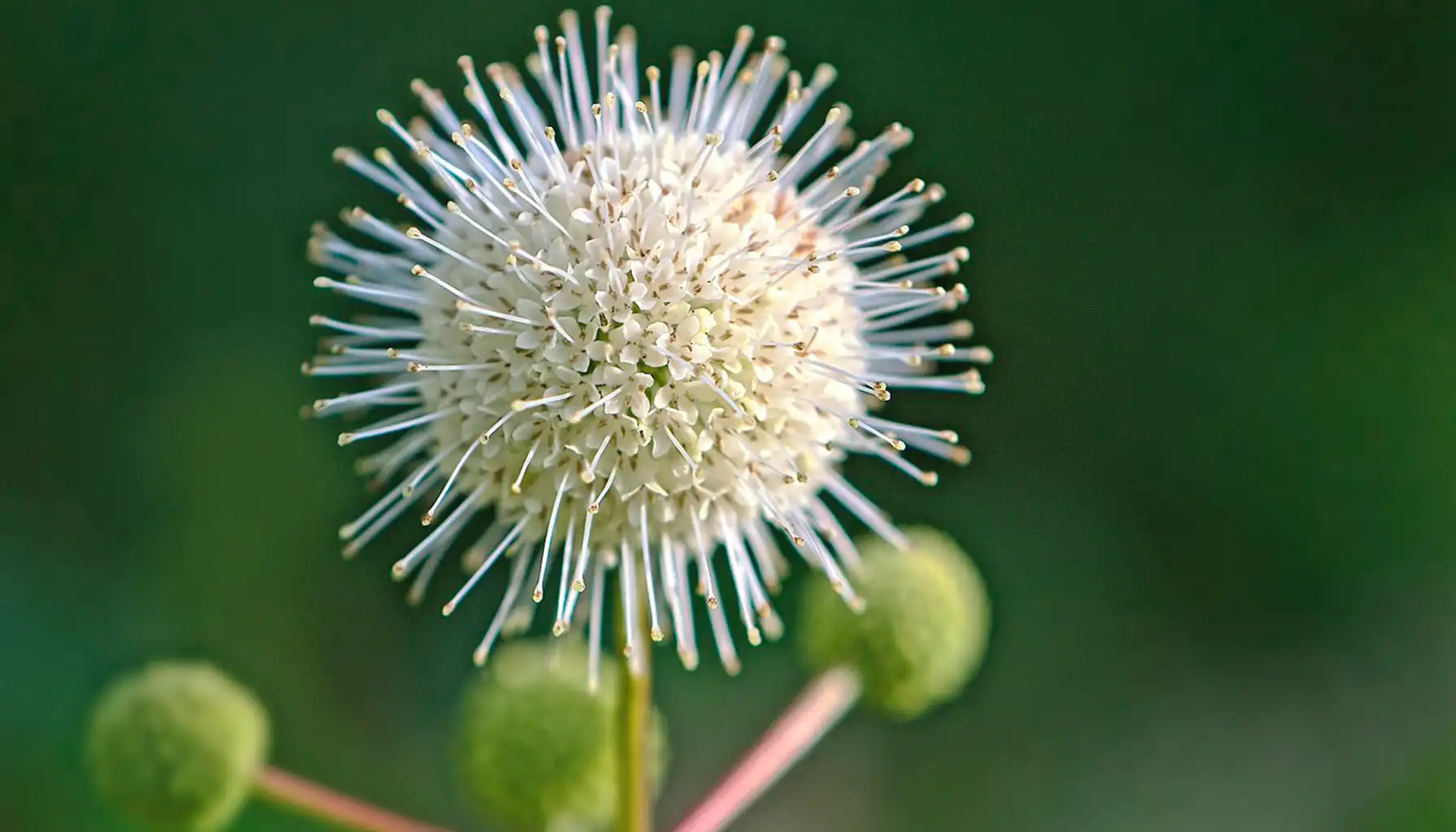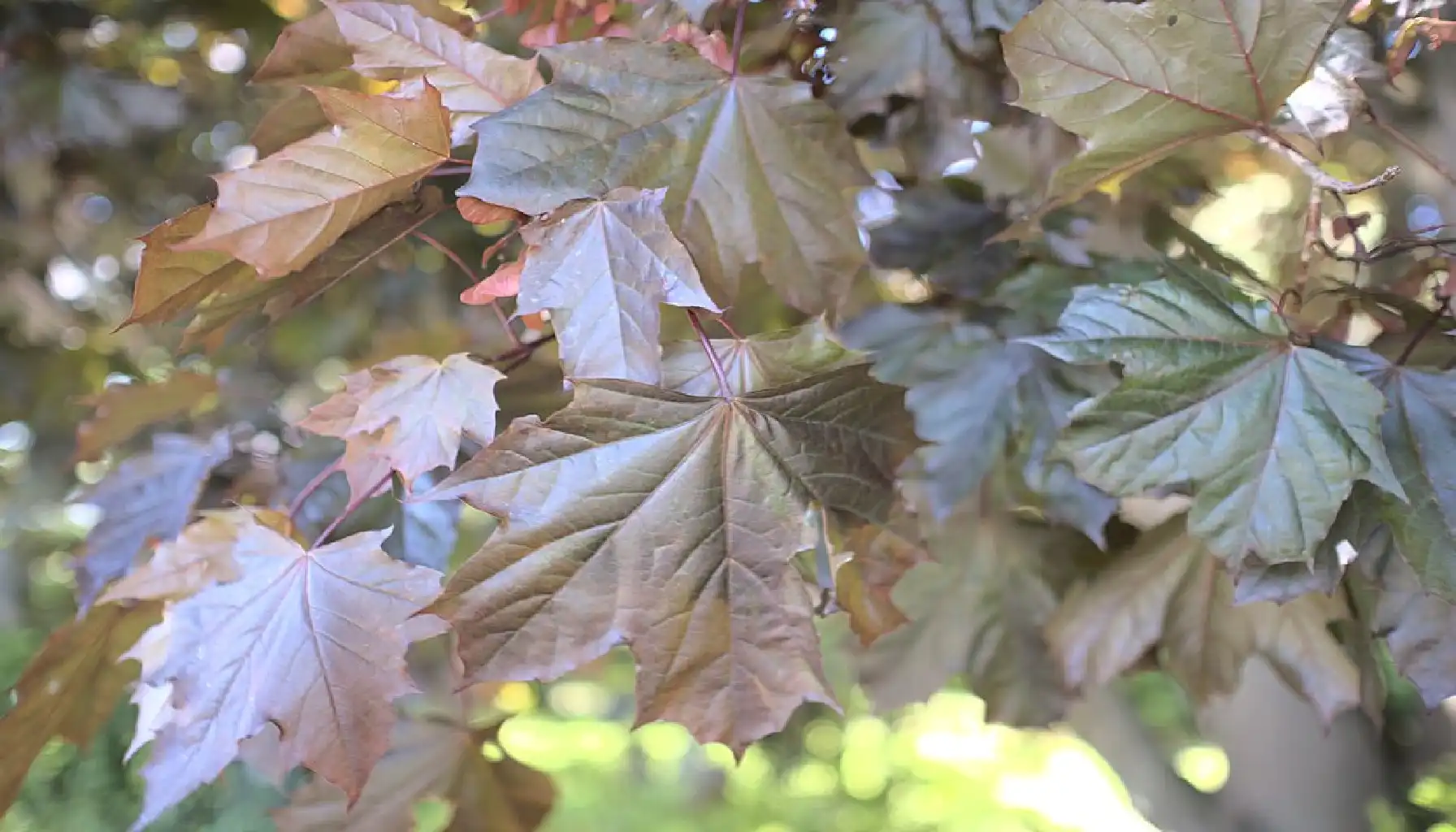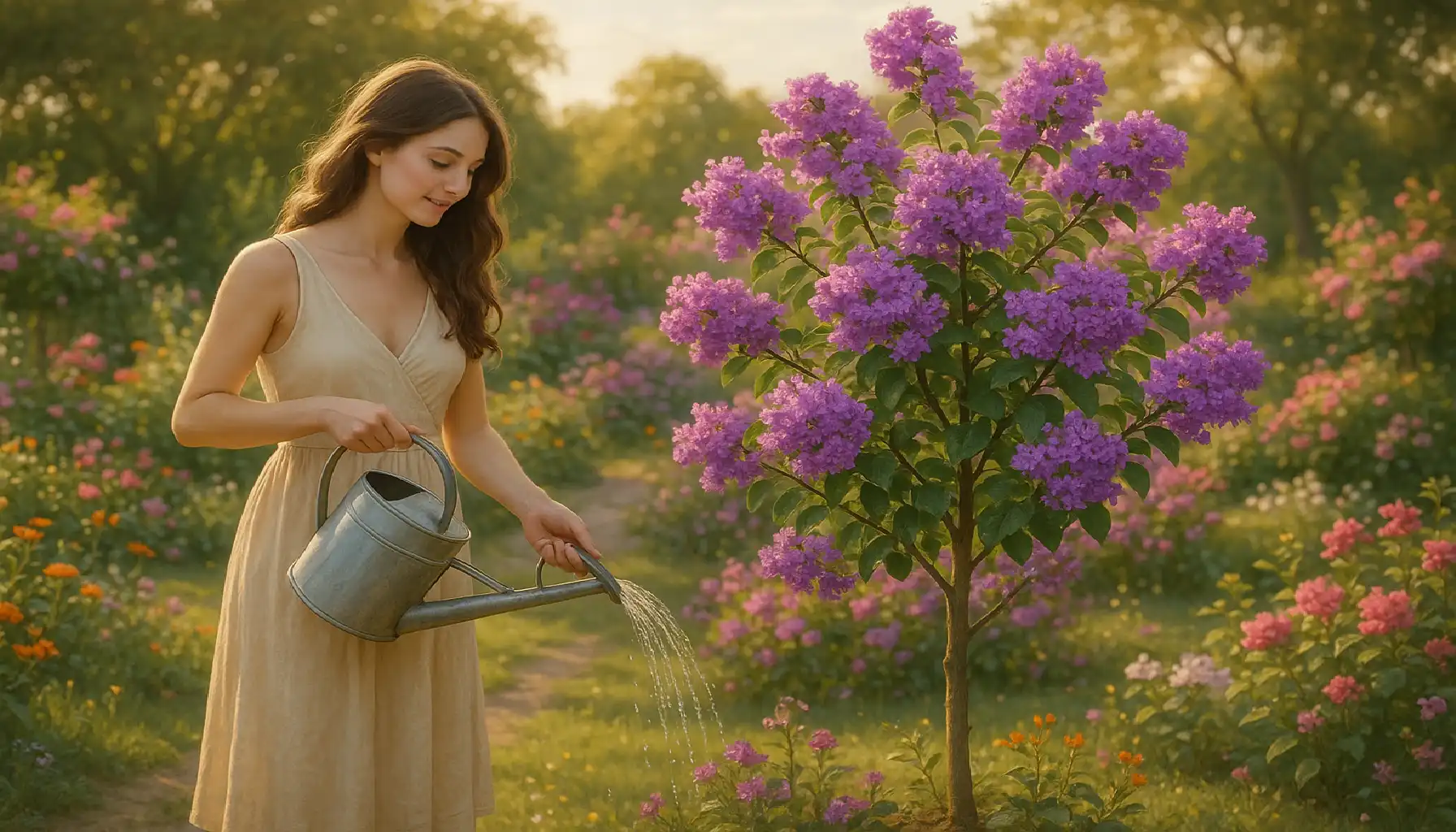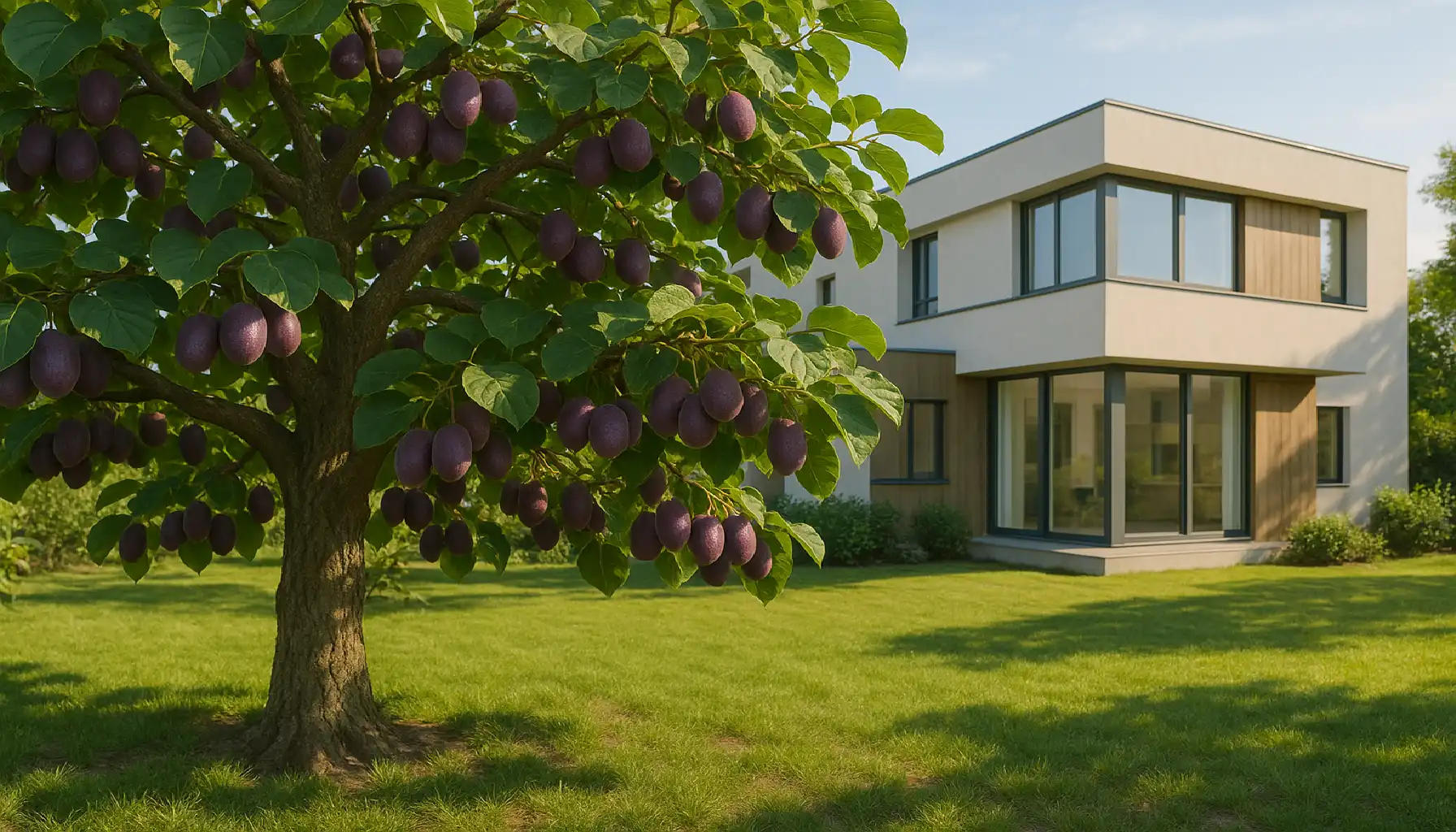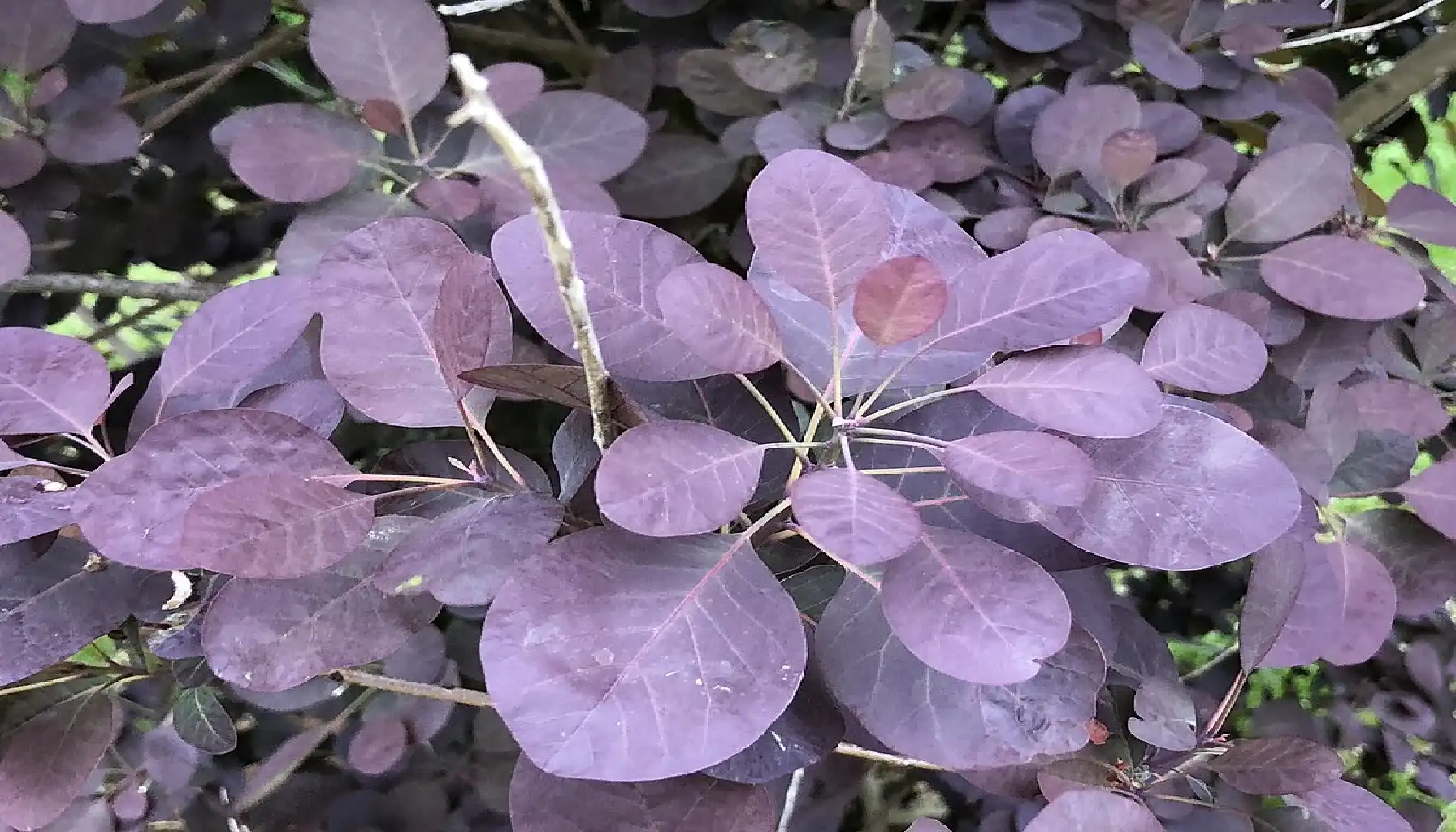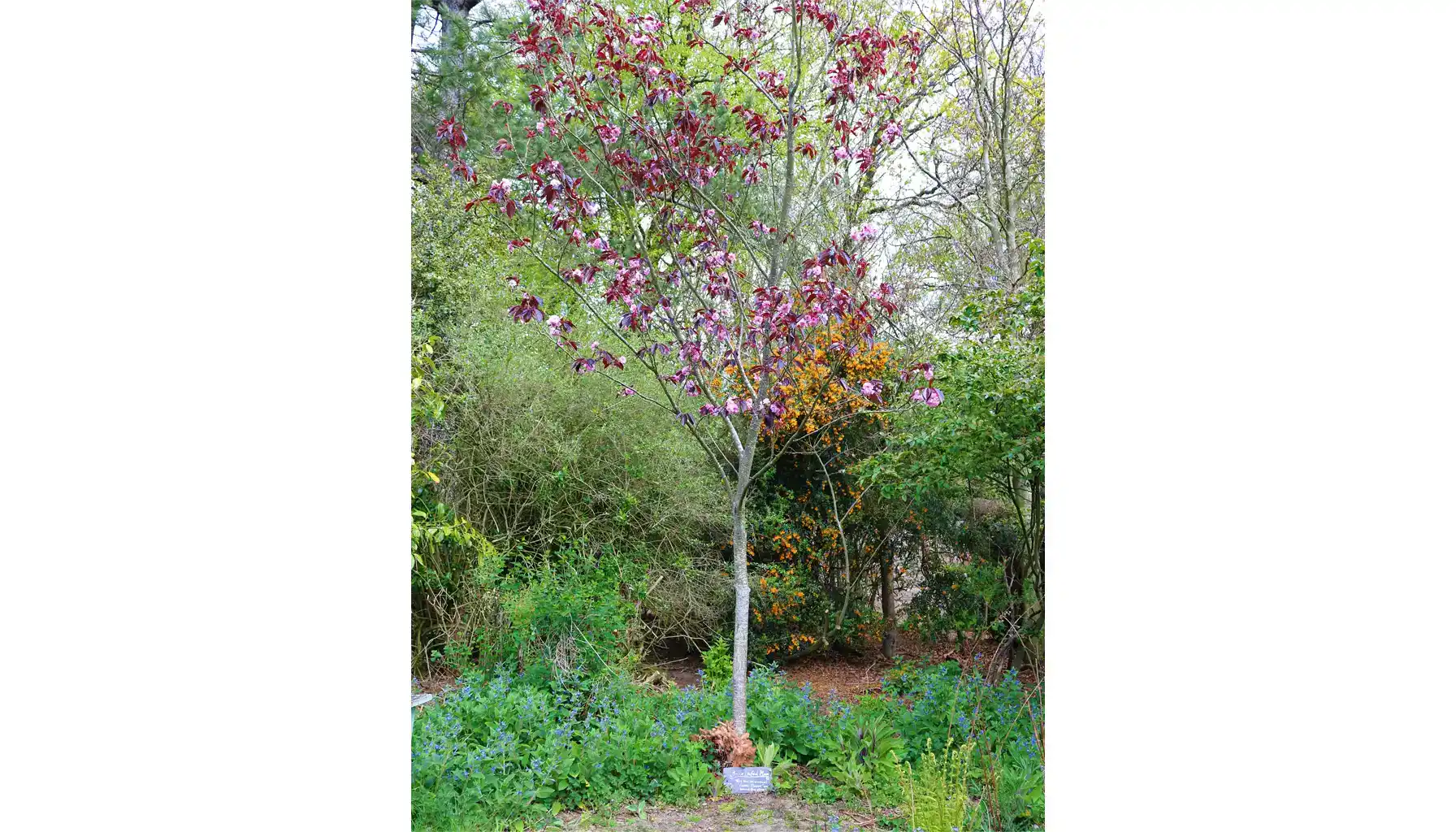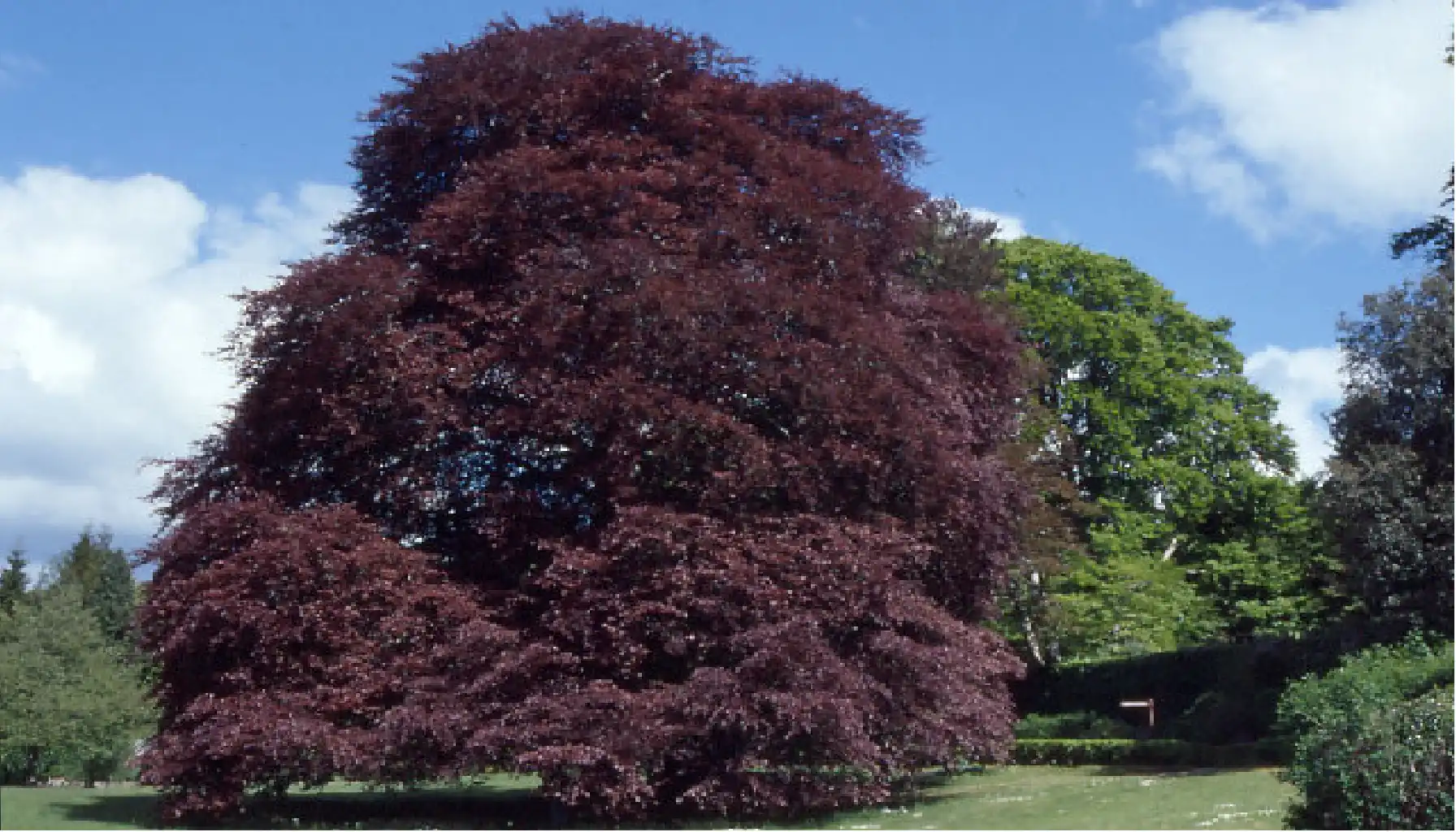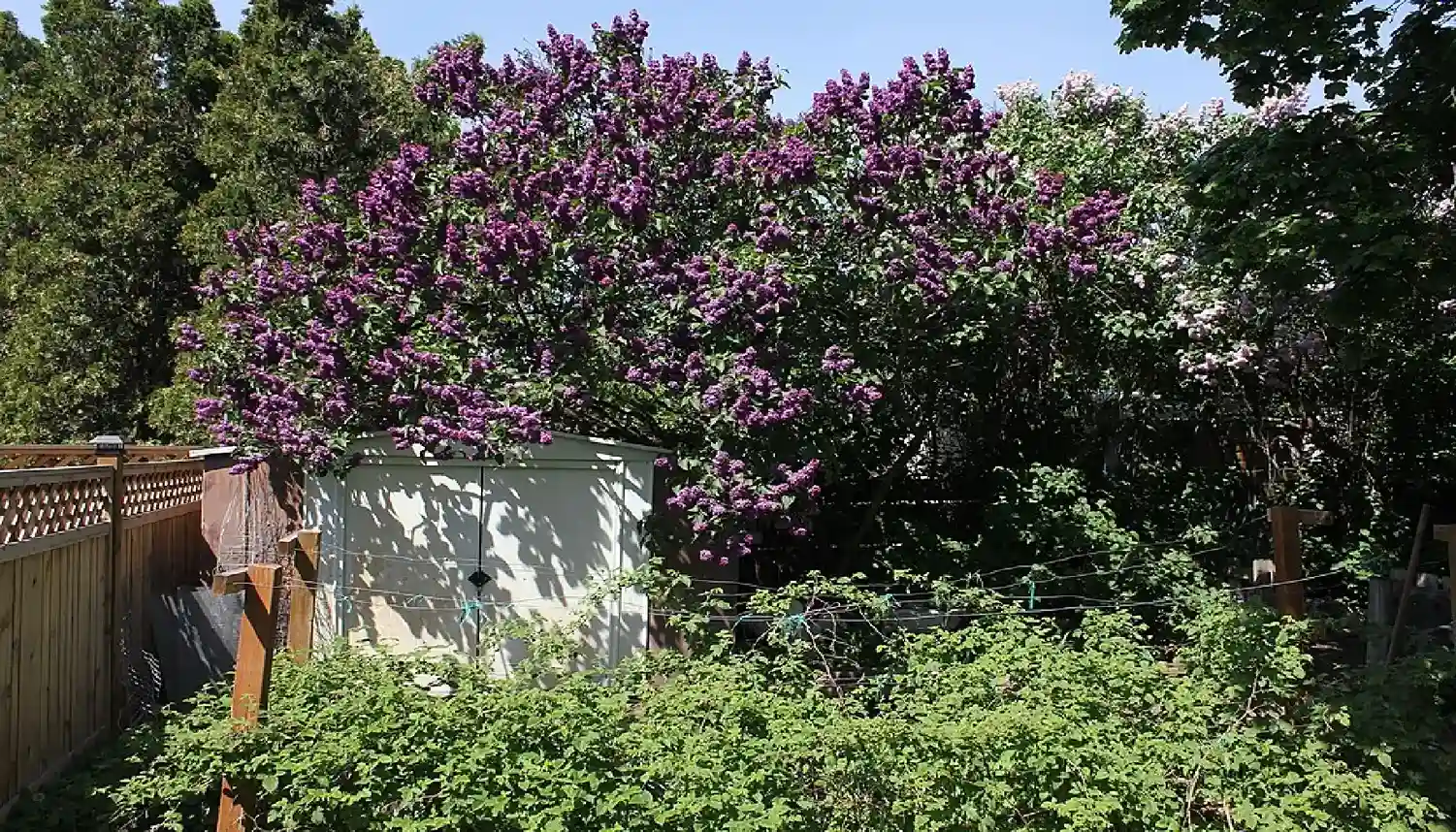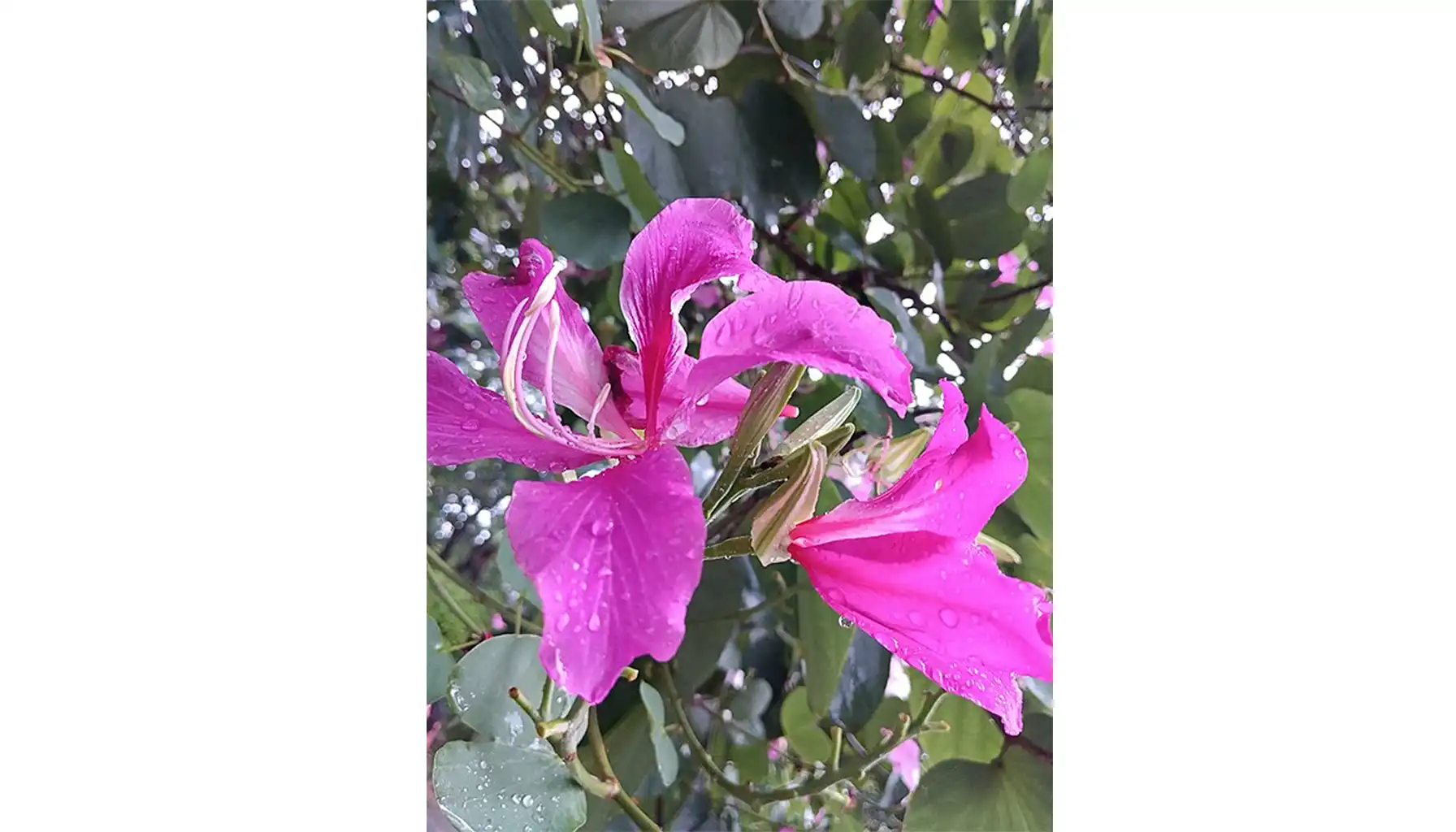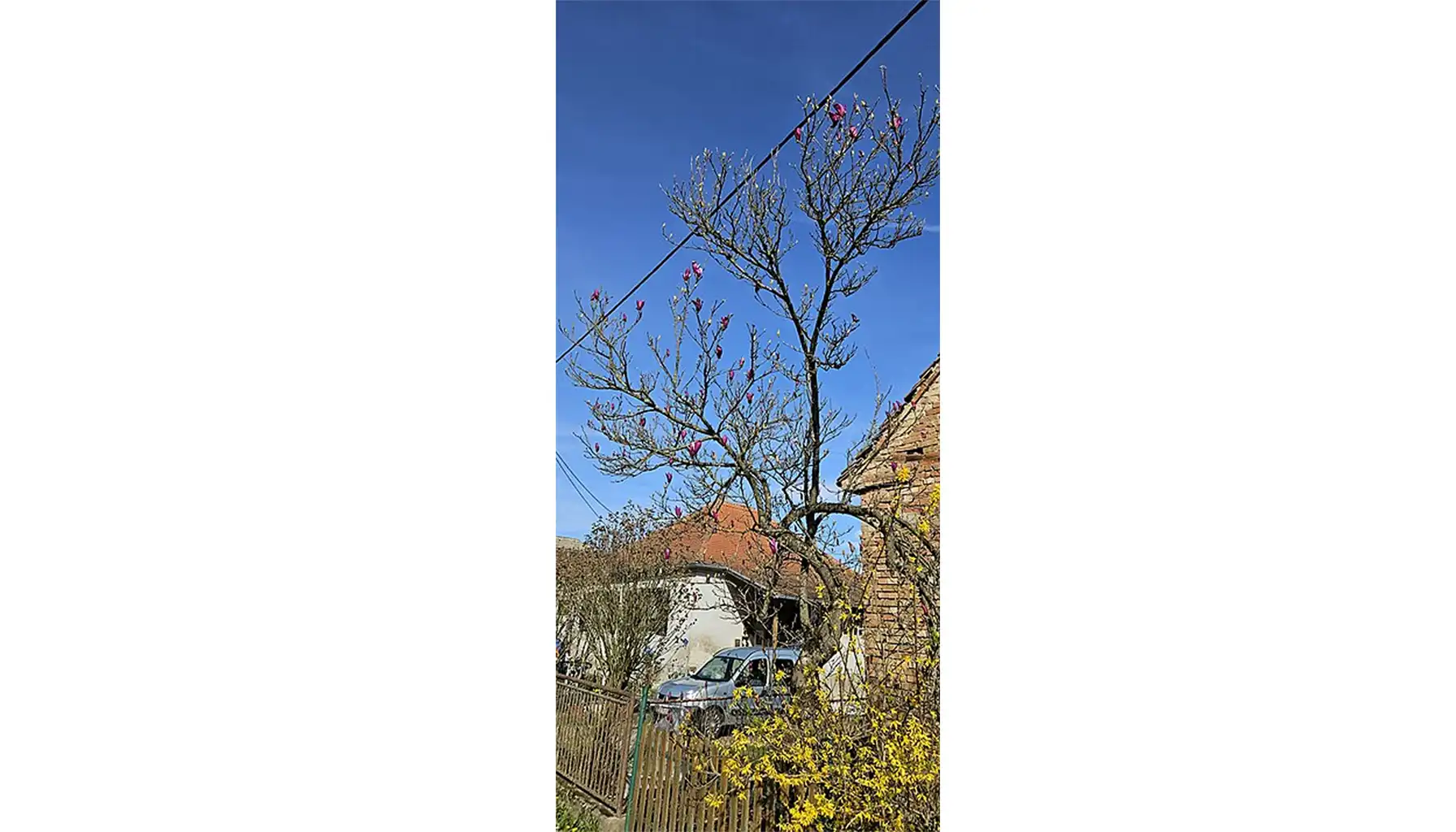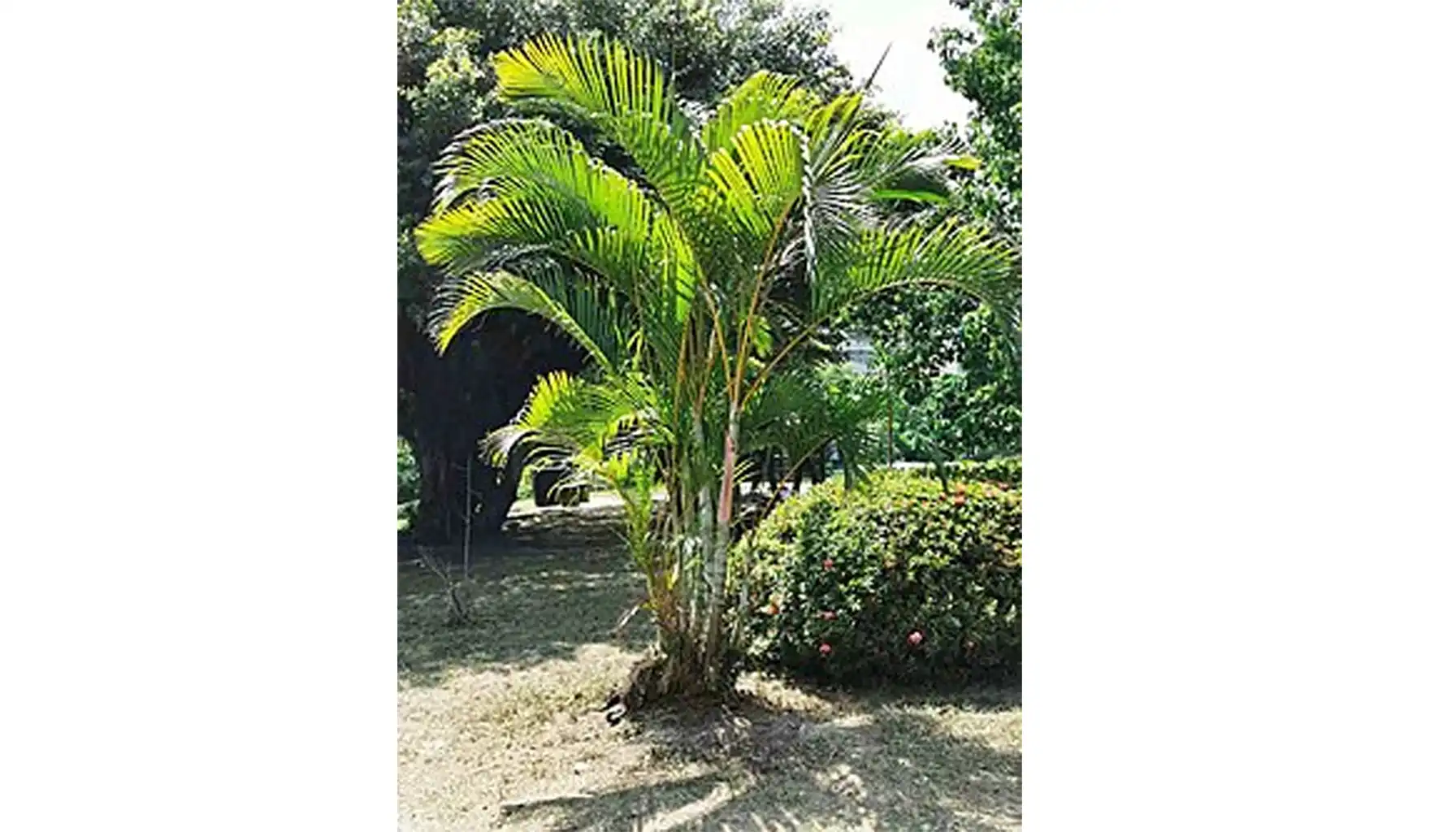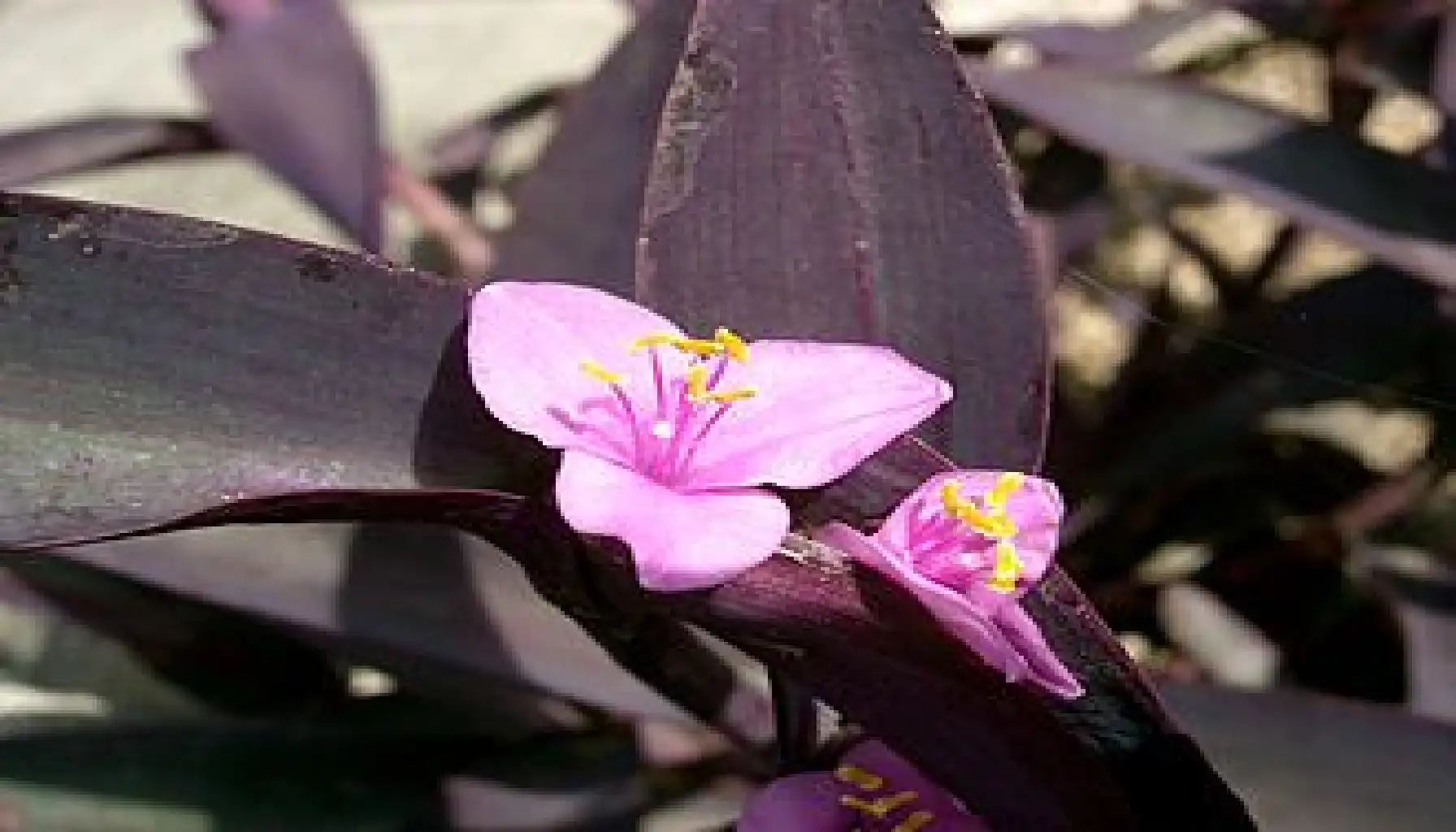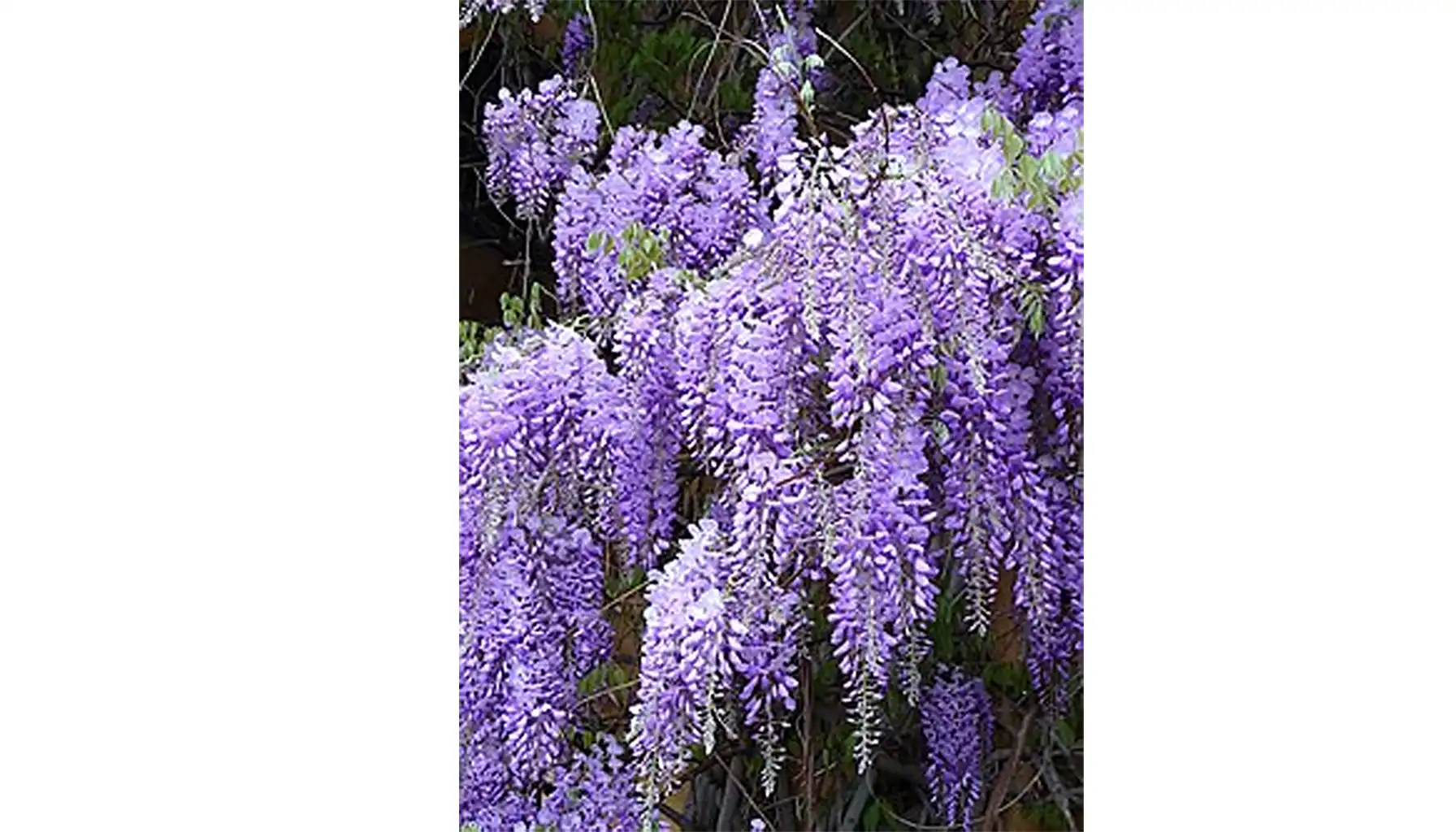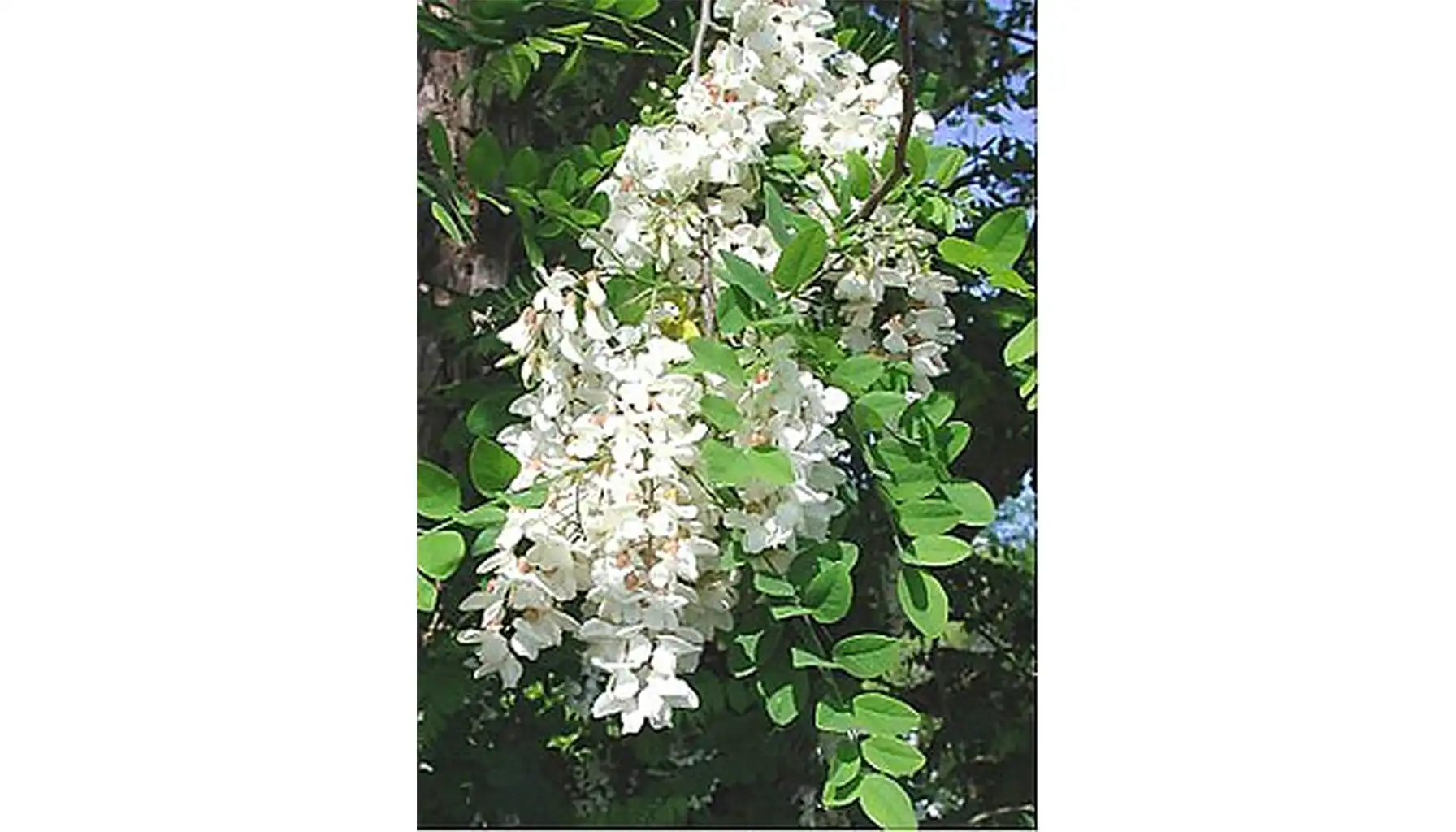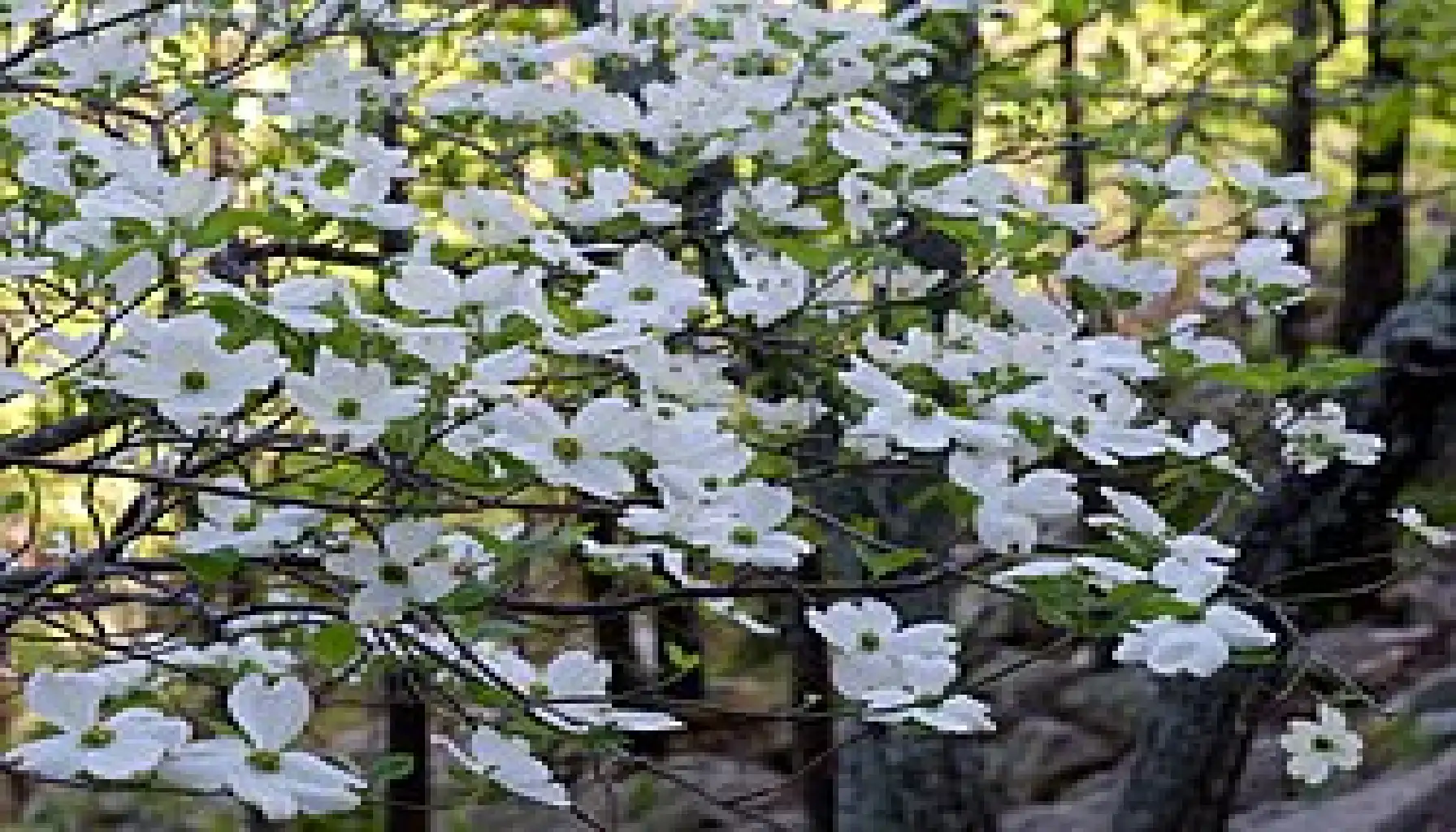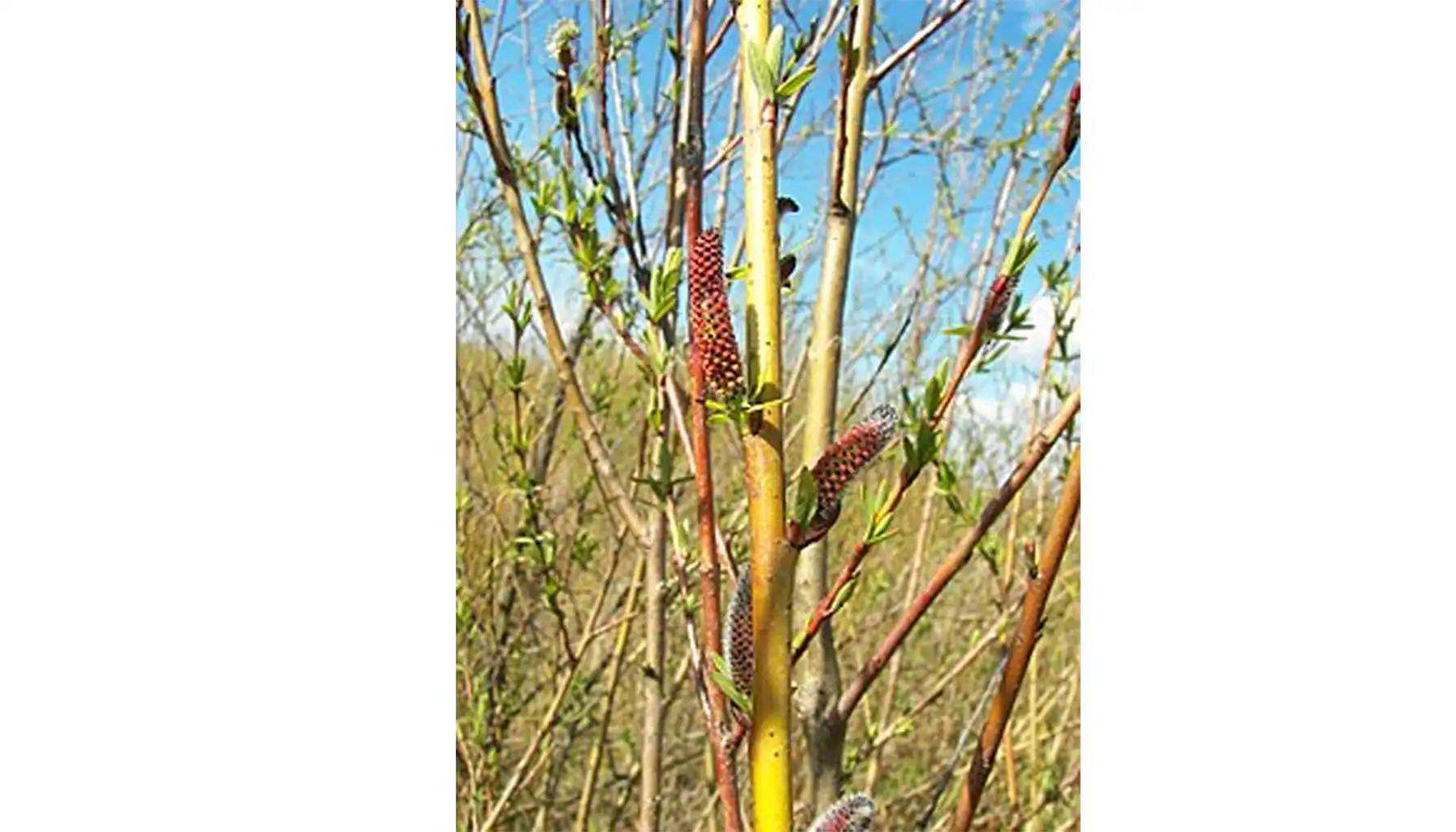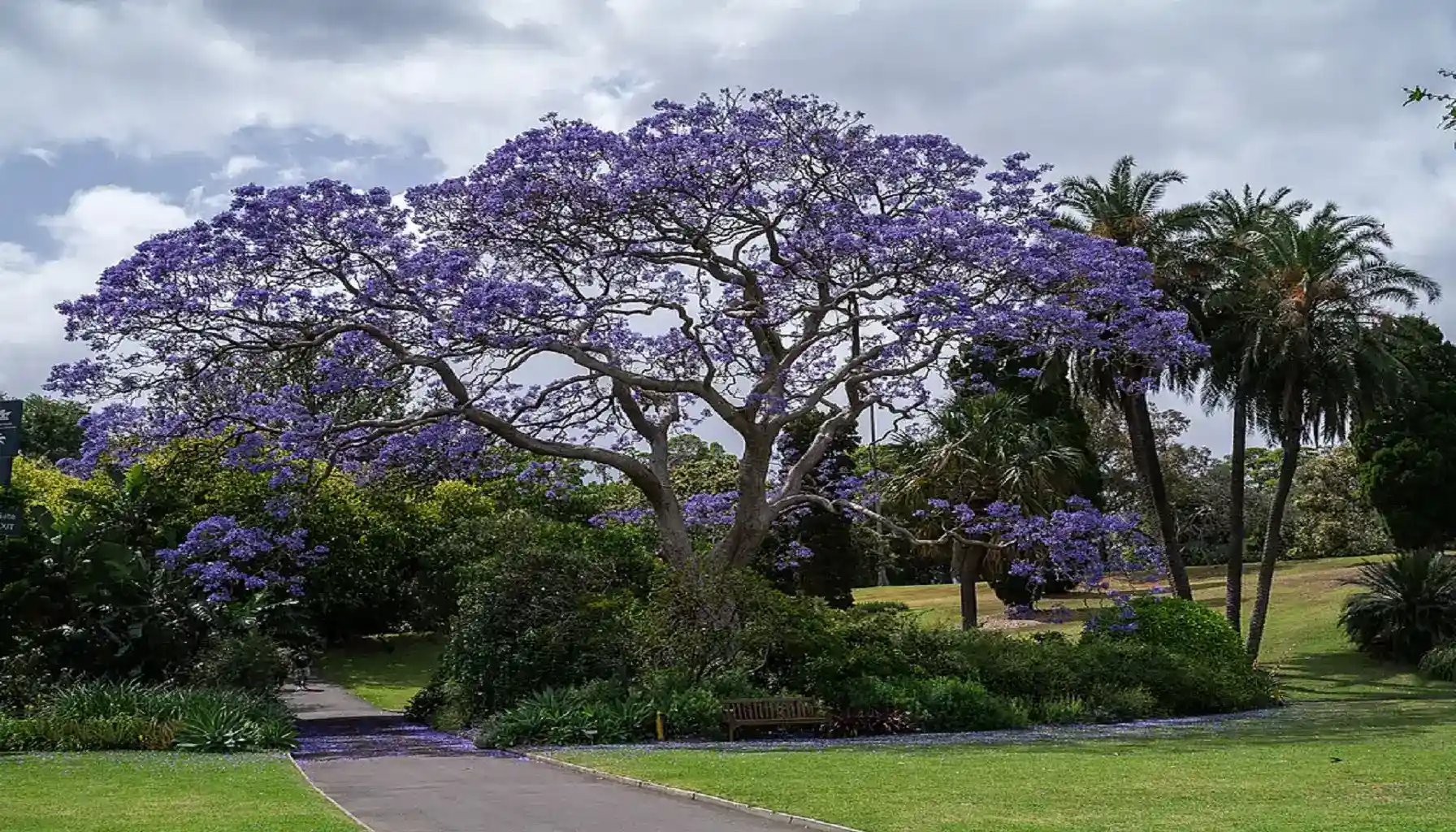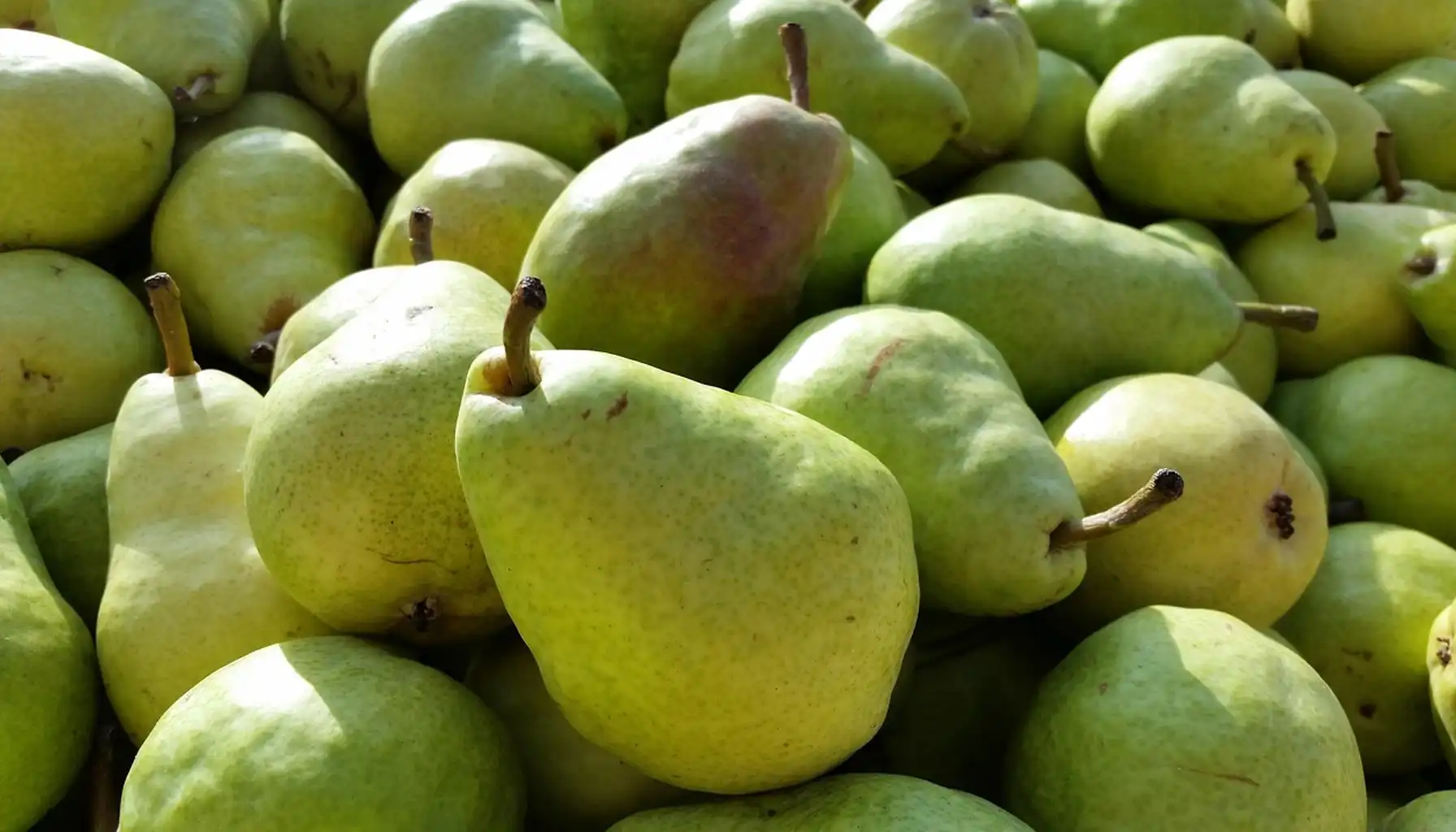.You will definitely fall in love with these trees with purple leaves!
In this article, we'll talk about how purple trees can transform any landscape. From blooming beauties to trees with purple foliage all year round, this is an accent that will add sophistication to your garden.
Let's look at 15 great options, delve into plant identification and admire the beauty of these plants!
Benefits in Your Garden
Focus of attention | A tree with bright foliage instantly becomes the centerpiece of the garden. It's like a catchy art object against a background of greenery. Imagine how a tree with rich purple leaves stands out against the background of a monotonous lawn. |
Color accents | They allow you to create interesting color contrasts. For example, a combination of purple leaves with silvery foliage of other plants, or with bright flowers.
|
Visual expansion of the space | Dark shades visually deepen the space. Therefore, if you plant such a tree in the far part of the garden, it will appear larger. |
Seasonal metamorphoses | Many of them change the color of their foliage throughout the year. They can be lighter in spring, saturated in summer, and fiery in autumn. This adds dynamism and interest to the garden at any time of the year. It's very similar to what python's purple green tree looks like, only we have this tree. |
Aesthetic and Visual Value
Gardens with such trees look unusual and stylish. This is a way to emphasize your personality and good taste. It's like choosing designer clothes instead of regular ones.
Purple is often associated with luxury, sophistication, and creativity. Being in the garden, where there are trees with this color of foliage, you will feel more inspired and relaxed. Imagine drinking tea in the shade of your purple lilac tree, enjoying its fragrance and beauty – just an idyll!
Such trees are a godsend for a photographer! They look great in pictures at any time of the year and in any light. Your garden will become a popular place for selfies.
A well-chosen tree can enhance the style of your home. For example, a tree with modern architecture.
Microclimate and Ecosystem
They create shade that protects other plants from overheating and allows you to comfortably spend time outdoors on hot days. In the shade of the purple kiwi tree, it will definitely be cool and pleasant in summer!
Like all trees, they absorb carbon dioxide and release oxygen, purifying the air from pollutants. This is especially important if you live in a city.
Trees serve as a natural barrier against the wind, protecting more delicate plants from it.
They attract birds, insects, and other animals that help pollinate plants and maintain balance in your garden's ecosystem.
15 Gorgeous Purple Trees
There are many amazing plants in nature that attract attention with their unusual colors. Among them, a special place is occupied by trees with shades from pale purple to rich purple. These trees not only decorate the landscape, but also create a special mood in any corner where they grow.
Purple Christmas Tree
A classic fir tree, but with purple needles and a silvery coating!
Plus a subtle coniferous aroma with berry notes and frost resistance.
And how convenient it would be if there was a simple purple flowering tree identification to find your ideal variety!
How to care
Location | Sun or light shade, well-drained soil. |
Watering | Regularly after planting, then only in drought. |
Fertilizer | In spring and autumn – for conifers. |
Pruning | Form the crown and remove the dry in spring/summer. |
Protection | Check for diseases regularly. |
Royal Purple Smoke Tree
Leather scumpia "Royal Purple" is a shrub/small tree with dark purple foliage (fiery autumn!) and fluffy pinkish inflorescences-"clouds".
Height 3-5m.
It is unpretentious to drought and frost.
And if you are looking for something else, purple blooming tree identification will always help!
How to care
Location | Sun or partial shade (the color fades in the shade). |
Soil | Well-drained, moderately fertile (does not like waterlogging). |
Fertilizer | In spring – complex for ornamental shrubs. |
Pruning | In spring– form a crown, remove dry, and discolored inflorescences. |
Watering | Regularly after planting, then only in drought. |
Purple Leaf Plum Tree
This is a decorative plum.
Otherwise, it's the purple plum tree, which catches the eye with its rich purple foliage.
In spring, it is decorated with delicate pink flowers, and then small fruits appear (also purple!), which, however, are more decorative than edible.
This is a real find if you are looking for a purple leaf tree.
How to care
Location | The Sun! The more sun there is, the brighter the color of the foliage. |
Soil | Well-drained, fertile. |
Diseases | It can be affected by plum diseases, so monitor the condition and carry out preventive maintenance. |
Pruning | Formative pruning in spring or summer. |
Watering | Moderate, especially in drought. |
Purple Beech Tree
A forest beech, but with a twist.
It is a tree with an elegant shape and dark purple, almost black foliage.
In spring, the leaves are slightly lighter, and in autumn they turn copper-red. It looks very noble and aristocratic.
He's certainly not a Purple Monkey in a Bubblegum Tree, but he's impressive too!
How to care
Location | Partial shade or shade, especially in hot climates. |
Soil | Fertile, well-drained, moist. It does not tolerate drought. |
Diseases | Resistant to diseases, but can be affected by pests. |
Pruning | Only for forming the crown and removing dry branches. It is better to spend time in winter. |
Watering | Regular, especially at a young age. |
Purple Lilac Tree
Lilac, and that says it all!
It is a tree (or shrub, whichever you choose) with fragrant inflorescences of delicate lilac, purple or purple.
In spring, it's just an explosion of colors and flavors!
How to care
Location | The Sun! The more, the better it blooms. |
Soil | Well-drained, non-acidic. |
Diseases | May be affected by powdery mildew, so keep an eye on it. |
Pruning | A Must! Immediately after flowering, to lay the buds for the next year. |
Watering | Moderate, only in drought. |
Purple Orchid Tree
It's a tree that blooms with orchids! Well, almost like orchids.
His flowers are really similar to orchids in shape and color – large, fragrant, usually lavender-pink or purple. It looks very impressive and unusual.
The tropics are right in your garden!
How to care
Location | Sun, lots of sun! A warm, sheltered place from the wind. |
Soil | Well-drained, fertile. |
Winter hardiness | Low, so in cold climates it is grown in a container and brought indoors for the winter. |
Pruning | Only for removing dry and damaged branches. |
Watering | Regular, especially in hot weather. It does not tolerate drought. |
Purple Magnolia Tree
Magnolia itself is the queen of the garden, and with flowers in shades of purple, it's just something!
Large, cup-shaped flowers with a delicate fragrance bloom in spring, even before the foliage appears.
Imagine this beauty against the background of the blue sky! And yes, it's quite a purple flower tree.
How to care
Location | Sun or partial shade, protected from strong winds. |
Soil | Acidic, fertile, well-drained. It does not tolerate calcareous soil. |
Hardiness | Depends on the variety, but most need shelter for the winter, especially at a young age. |
Pruning | Only for removing dry and damaged branches. Pruning is carried out after flowering. |
Watering | Regular, especially at a young age. |
Purple Palm Tree Delight
Unfortunately, completely purple palms do not exist in nature.
However, there are palm species whose young leaves or stems have a purple hue, for example, some species of Dypsis.
Imagine: a slender palm tree, whose new leaves bloom with a purple tint, and then turn green.
How to care
Location | Sun, lots of sun! |
Soil | Well-drained, fertile. |
Winter hardiness | Very low, so it is grown in a container and stored in a warm room for the winter. |
Humidity | Likes high humidity, so spraying will be useful. |
Watering | Regular, abundant watering, especially in hot weather. |
Purple Heart Tree
Tradescantia pallida is a herbaceous perennial plant that is often grown as a houseplant, but in a warm climate it feels great in the garden!
The main feature is the juicy, fleshy leaves of a rich purple color.
Imagine a picture of such "hearts". And if you look at the cut of the trunk, in more mature specimens, you can see that the core is a purple heart wood tree, which makes it even more unique.
How to care
Location | Sun or partial shade. In the sun, the color becomes more saturated. |
Soil | Well-drained, fertile. |
Winter hardiness | Low, so in cold climates it is grown as an annual or in a container. |
Pruning | To form a bush and remove dry shoots. It is easily propagated by cuttings. |
Watering | Moderate, does not tolerate waterlogging. |
Purple Wisteria Tree
In fact, wisteria is a liana, but if it is formed correctly, it can look like a small tree!
The main charm is the long, hanging tassels of fragrant flowers, usually in shades of purple, lavender or purple. Imagine a fragrant cascade of flowers!
How to care
Location | Sunny, sheltered from strong winds. Need a solid foothold! |
Soil | Well-drained, fertile. |
Hardiness | Depends on the variety, but most need shelter for the winter. |
Pruning | Mandatory and regular! Formative pruning to achieve the shape of the sapling, and post-flowering pruning to stimulate the formation of new flower buds. |
Watering | Regular, especially at a young age. |
Purple Robe Locust Tree
This is Robinia viscosa – a small tree with an openwork crown and fragrant pink-purple flowers gathered in a brush.
In spring, when it blooms, it seems as if it has been wrapped in a purple mantle!
By the way, its leaves are also reddish.
How to care
Location | Sunny, but tolerates partial shade. |
Soil | Not demanding of the soil, but grows better in a well-drained one. |
Winter hardiness | Quite high. |
Pruning | Only for removing dry and damaged branches. |
Watering | Moderate, drought-resistant. |
Purple Dogwood Tree
In fact, there is no dogwood with completely purple foliage.
But there are dogwood varieties whose young leaves have a purple hue, for example, Cornus sanguinea "Midwinter Fire".
And in some dogwood species, the bark turns bright red in winter, which also adds interesting colors to the garden.
How to care
Location | Sun or partial shade. The bark will be brighter in the sun. |
Soil | Moist, well-drained, fertile. |
Winter hardiness | Quite high. |
Pruning | To form a bush and remove old branches. Pruning is best done in the spring. |
Watering | Regular, especially at a young age. |
Purple Weeping Willow Tree
As in the case of dogwood, there is no completely purple weeping willow.
However, there are willow varieties whose young shoots have a purple hue, for example, Salix purpurea.
Imagine an elegant tree with drooping branches, painted in maroon and purple tones!
This purple willow tree looks incredibly picturesque by the water or against the background of a green lawn.
How to care
Location | Sun or partial shade, humid location. |
Soil | Moist, fertile. |
Winter hardiness | Quite high. |
Pruning | Regular, to form the crown and remove dry branches. Pruning is best done in the spring. |
Watering | Abundant and regular. It does not tolerate drought. |
Purple Maple Tree
Maple with purple foliage is a true classic!
There are many maple varieties with leaves in different shades, from maroon to almost black.
In spring, the leaves may be lighter, and in autumn they may acquire fiery shades.
How to care
Location | Depends on the variety, but most prefer the sun or partial shade. |
Soil | Well-drained, fertile. |
Winter hardiness | Depends on the variety. |
Pruning | Only for forming the crown and removing dry branches. |
Watering | Moderate, especially at a young age. |
Purple Jacaranda Tree
How to care
Location | Maximum sun! |
Soil | Well-drained, fertile. |
Winter hardiness | Extremely low! For the winter, you need to bring it into a warm room. |
Pruning | After flowering, to form the crown. |
Watering | Regular, especially during the period of active growth and flowering. |
AI Plant Finder Related Posts:
